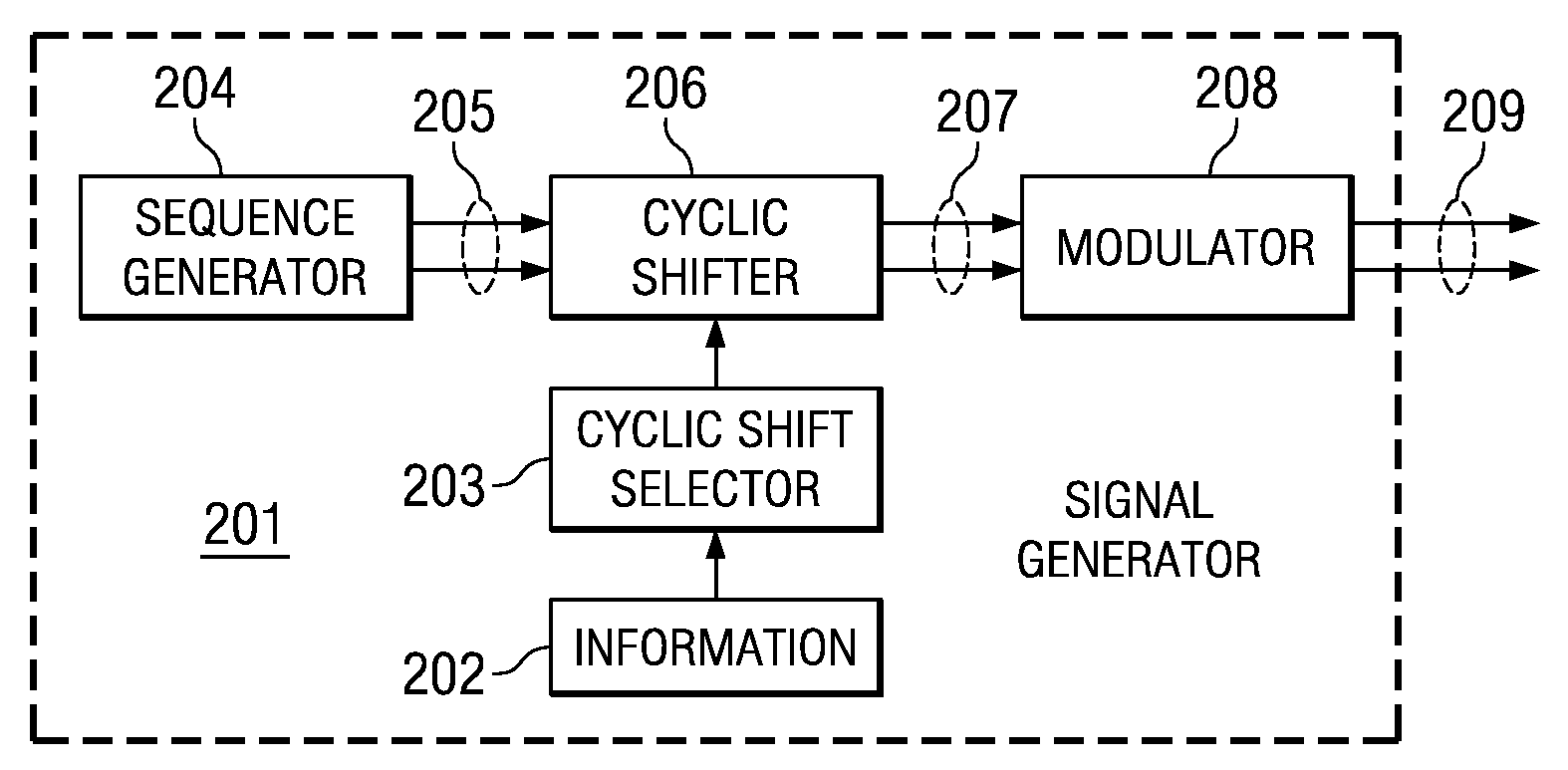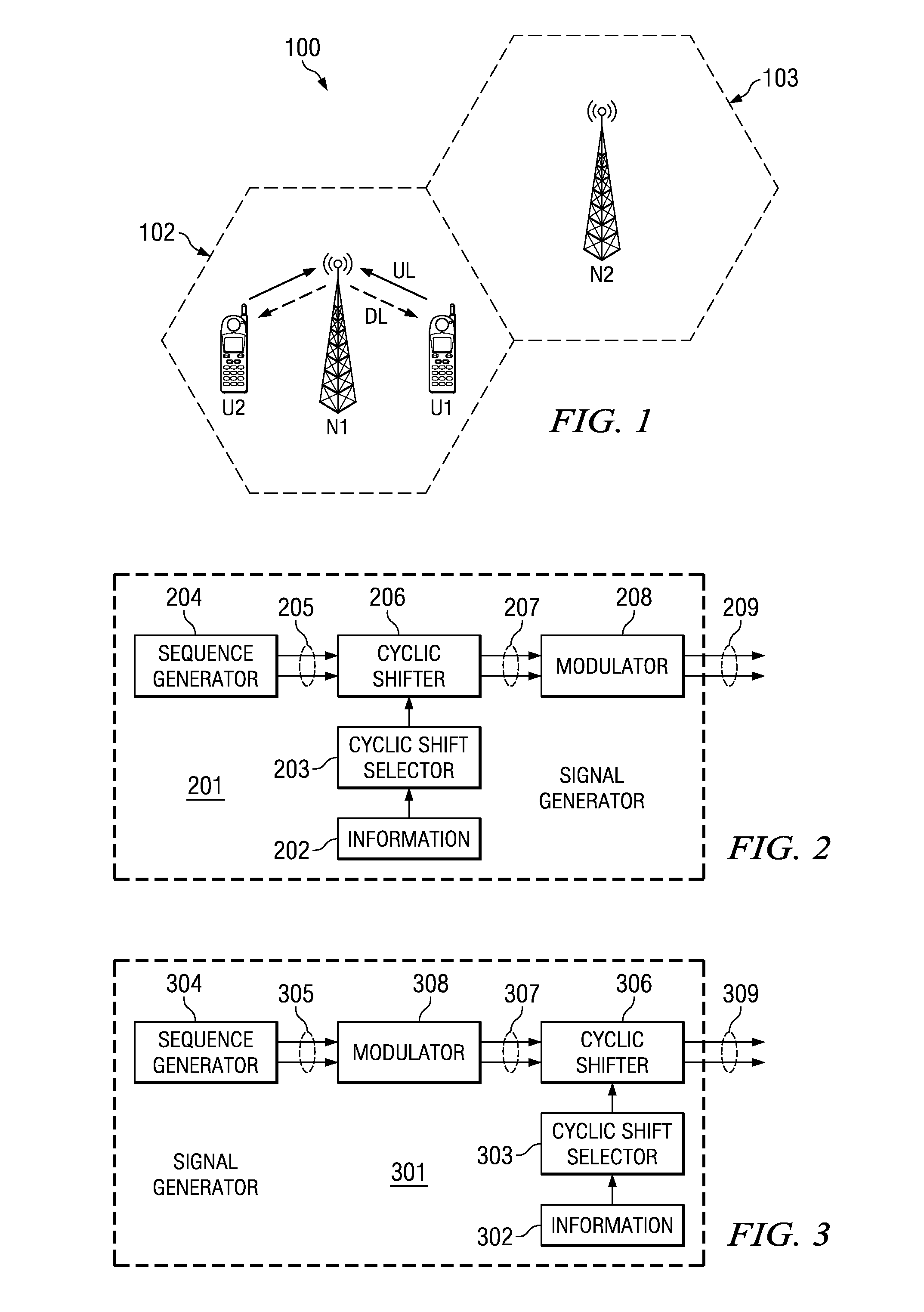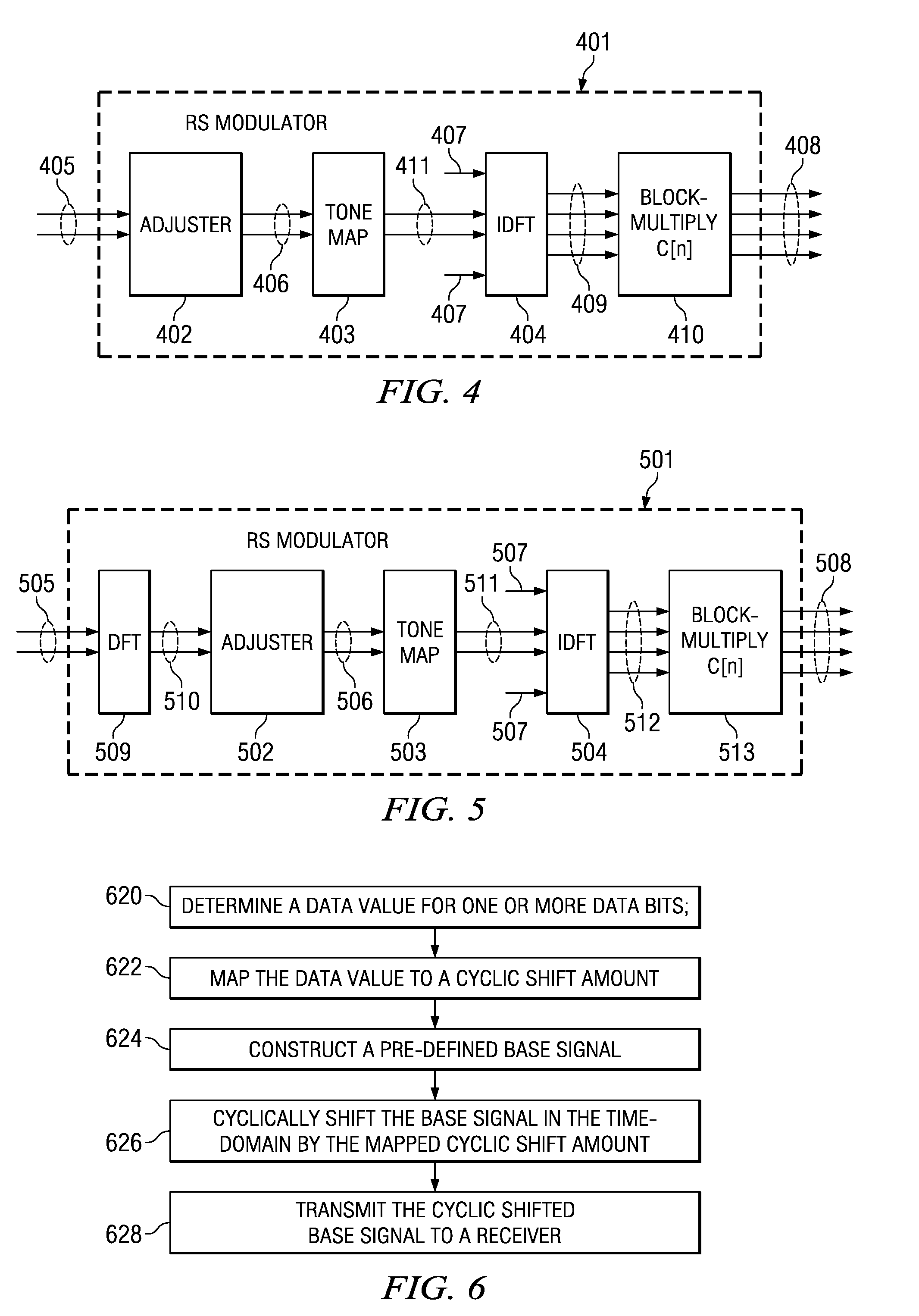Transmission of ACK/NACK Bits and their Embedding in the Reference Signal
a reference signal and ack/nack technology, applied in the field of reference signals, can solve the problems of inflexible radio resource allocation to the physical hsupa channel and the physical data channel, and interference between signals from different users within the same cell
- Summary
- Abstract
- Description
- Claims
- Application Information
AI Technical Summary
Benefits of technology
Problems solved by technology
Method used
Image
Examples
Embodiment Construction
[0033]FIG. 1 is a representation of two cells in a cellular communication network 100. In this representation only two cells 102-103 are illustrated for simplicity, but it should be understood that the network includes a large matrix of cells and each cell is generally completely surrounded by neighboring cells. A representative set of user equipment U1-U2 is currently in cell 102 and is being served by NodeB N1. Cell 103 is a neighbor cell and NodeB N2 is not serving UE U1-U2. U1 and U2 are representative of a set of user equipment in any given cell since there will typically be tens or hundreds of UE in each cell. Each UE communicates with its serving NodeB using an uplink transmission UL and a downlink transmission DL.
[0034]Cyclic-shift keying (CSK) is a transmit strategy where certain information is encoded inside a cyclic shift of a pre-defined base signal. The pre-defined base signal is known at both the transmitter and the receiver a-priori. CSK transmission can be decoded in...
PUM
 Login to View More
Login to View More Abstract
Description
Claims
Application Information
 Login to View More
Login to View More - R&D
- Intellectual Property
- Life Sciences
- Materials
- Tech Scout
- Unparalleled Data Quality
- Higher Quality Content
- 60% Fewer Hallucinations
Browse by: Latest US Patents, China's latest patents, Technical Efficacy Thesaurus, Application Domain, Technology Topic, Popular Technical Reports.
© 2025 PatSnap. All rights reserved.Legal|Privacy policy|Modern Slavery Act Transparency Statement|Sitemap|About US| Contact US: help@patsnap.com



